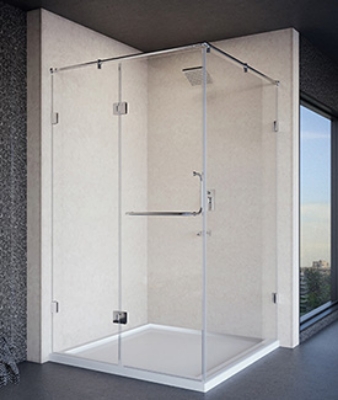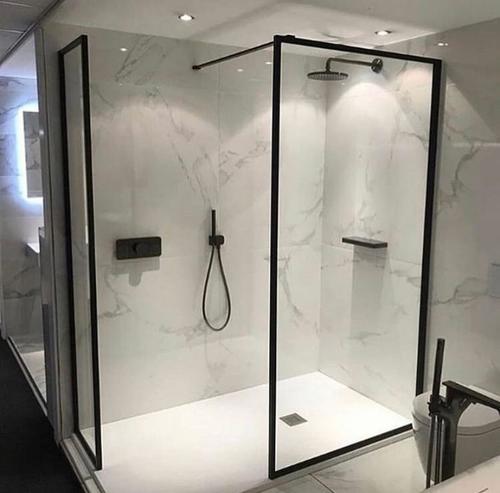They are making a number of great points about How to Build a Shower Enclosure for Your DIY Bathroom as a whole in this article following next.

An effective shower installment calls for mindful planning as well as a great deal of work. Most of the times, you will certainly need to do three sorts of jobs: mounting wall surfaces, setting up the plumbing, and also ending up wall surfaces.
Preparation
To start with, you should pick the type of shower that you want to set up. It is necessary to determine whether the selected shower is capable of handling specific systems as well as can control a risk-free level of water via the central heating boiler. The majority of shower systems nowadays are created to be versatile to different water pressures (such as saved hot water and cool mains).
It is likewise important to take into account the water stress and the preparation of the piping and water drainage for the shower
Different Types of Shower Units
Technique
Depending upon the type of shower you desire to install, the shower head have to either be fitted in order to prevent its contact with the water in the bath listed below or the base tray, or it should have a check shutoff.
Before beginning, it is recommended to note the positions of the shower head as well as control, as well as to intend the pipe-work included. Additionally, the drain system to remove the drainage will certainly require to be intended. Both positions of the cable television path and the shower switch will certainly additionally need to be thought about if an instant or electrical shower system is being installed.
Make use of the direction guide given with the shower system to fit the shower control.Before suitable the pipelines that will supply the water to the shower system, it is very important to remove the water supply. In order to protect the pipes, they ought to be provided a water-proof covering as well as additionally fitted with separating valves. The pipelines can after that be buried right into the wall and also plastered over to neaten the overall appearance.
Fit the base tray, shower head, and fittings.
Link the major shower control to the pipelines that will certainly be providing the water (This might need a women screw thread adapter).
Reconnect the water supply and also test the pipelines for any leakages, as some might need firm.
If you are installing an electrical shower, bear in mind to switch off the electrical power supply before making any type of electrical connections. When these connections have actually been made (there should be assistance within the user's manual), the power supply can be changed back on.
Readjusting Water Stress to Fit Your Shower
The cold water tank can be lifted to a greater height (in some cases as little as 150mm (6inches)) by installation a solid wooden assistance beneath it - perhaps composed of struts as well as blockboards. If you pick this choice, the main and also distribution pipelines will also have to be increased to fulfill the new height of the reservoir.
Conversely, a booster pump (a single pump or a dual/twin pump) can be fitted. Whichever kind is selected, it has to be attached into the power supply in order to run.
Piping and also Drain
It is best to make use of 15mm diameter supply pipes, as well as make the go to the shower as short as well as straight as possible so regarding preserve optimal stress as well as reduce warmth loss. In addition, by reducing the use of elbow joints for pipe corners, you can lower the resistance in the flow of the water supply. You can achieve this by flexing the pipelines rather.
The Majority Of Common Blunders
How Do You Install a Shower? Follow This Guide
Installing a Shower at a Glance
Tools & Materials: Level, electric drill, caulk, hole saw, cedar shims, shower unit Step 1: Drill pilot holes Step 2: Prep fixture holes Step 3: Move unit into place Step 4: Caulk corners and base Step 5: Attach door Step 6: Install shower pan Whenever plumbing is involved in a DIY project, people worry about what might go wrong. The truth is that installing a shower isn’t that complicated, and you can save a lot of money by doing it yourself. You shouldn’t need to make any alterations to your plumbing to complete the job, and most of the tools you need will be provided in your new shower kit.
Can I Install a Shower Myself?
Even if you’ve never installed a shower before, you’ll find this to be a project that is perfectly suited for DIYers with a moderate level of experience. Whether you're doing a bathtub conversion or installing a new stall, most of what you need comes in shower kits that you can purchase from a hardware store. The first thing you need to do is determine what type of shower stall you want.
Single-panel stalls are the easiest to install because they come preassembled. All you need to do is put them in place. Multi-panel showers require a few additional steps, but you’ve got more control over the appearance of your unit. Multi-panel units are also much easier to handle if you’re going to do the installation without any help.
Be sure to take all appropriate safety precautions, such as wearing eye protection and gloves. When you’re removing or installing a shower unit, you might kick up debris that could hurt your eyes. You’ll also need to work with equipment that will get extremely hot, so be sure to have safety gloves handy.
Tools and Materials
2- to 4-foot level Electric drill with a 1/8-inch drill bit Caulk 2-inch hole saw Cedar shims The unit itself Before You Begin: Prep the Space
It’s highly important to measure your space accurately before putting the stall in. Measuring from the floor upward and from each corner outward will ensure you’ve got the right measurements. What you’re looking for is where the plumbing apparatuses are going to come through the stall. Transfer these measurements over to the back of your unit by drawing the locations of these holes using a pencil or marker.
Pull out your old shower and make sure to scrape off all the old caulking. Be thorough because you want to work with smooth surfaces for the best installation. Once you’ve pulled out your existing shower, you need to make sure that the floor is clean and dry. The best way to clean debris is with a shop vacuum, as it’ll soak up water and dirt together.
If you’re experiencing any plumbing issues, such as low water pressure, this is a perfect opportunity to solve them. Make sure that the pipes themselves are not in need of patching and clean your showerhead. When you turn the water back on after your project, check the pipes for signs of wear or disrepair. Anything beyond minor repairs should be handled by a plumber, and this is the best time to bring in a professional.
If the floor has any moisture at all, don’t proceed until it’s completely dry. The last thing you need is for the floor to rot or invite mold and mildew into your base. Once everything is dry, apply waterproof wallboard to the walls. This can be attached with screws or nails, then sealed with caulk so that water doesn’t seep into any crevices.

I hope you enjoyed reading our topic on How to Install a Shower Enclosure . Thanks for taking a few minutes to read through our post. Do you know another person who is excited about the subject? Please feel free to promote it. Thank you for going through it.
Get the best, ring us!